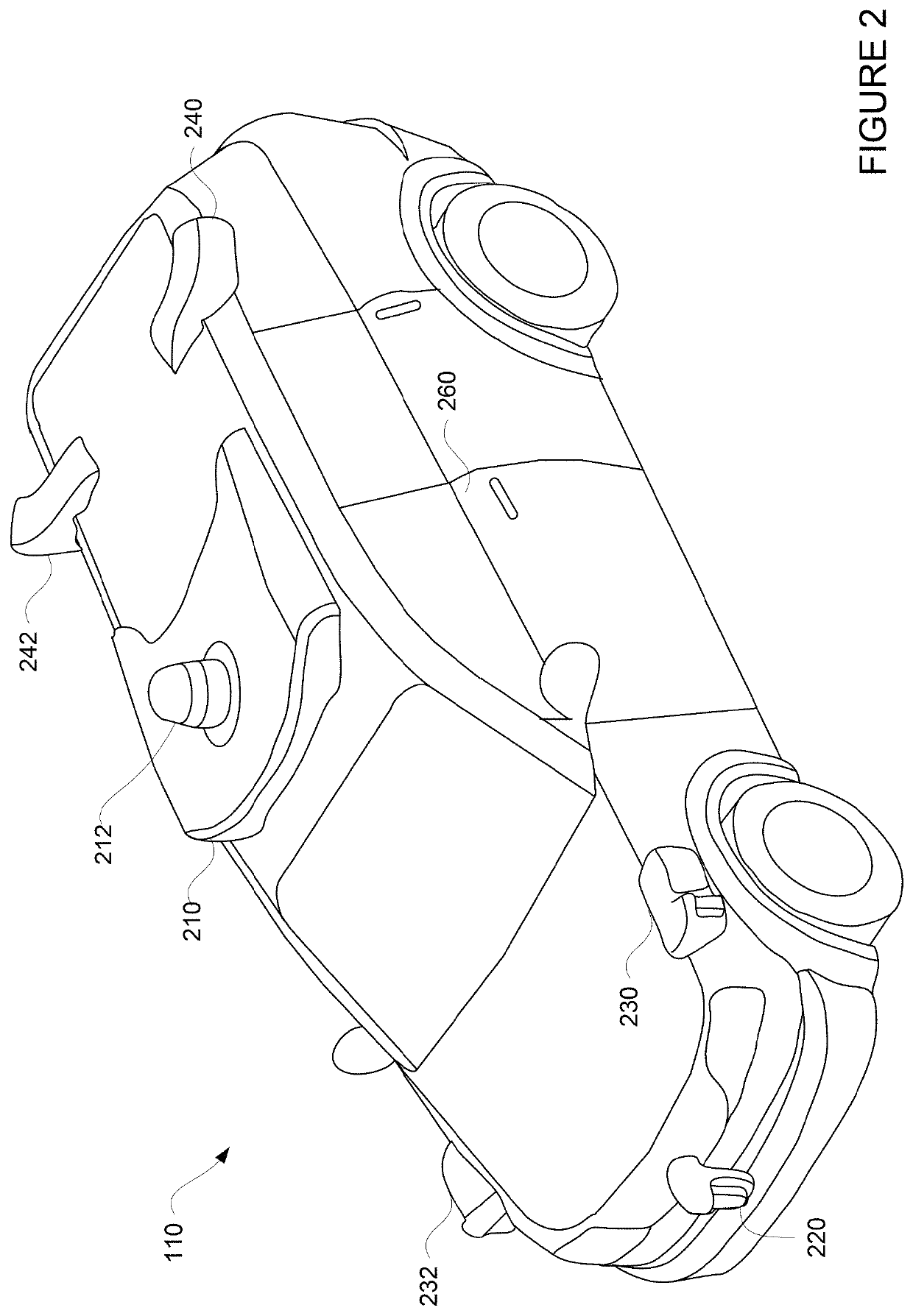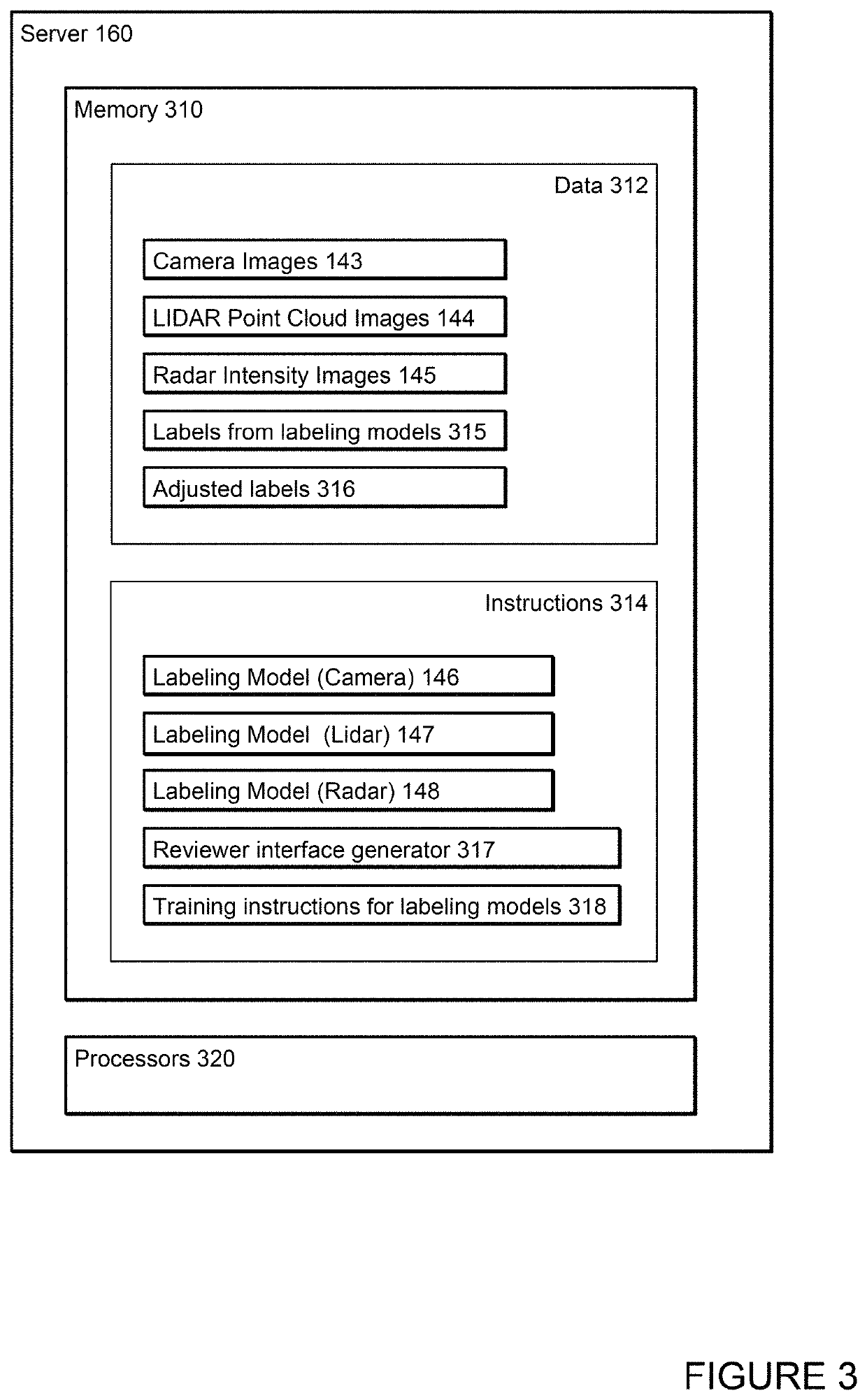Auto labeler
a labeler and auto technology, applied in scene recognition, instruments, and reradiation, etc., can solve problems such as moving objects appearing to have a jittering trajectory, and achieve the effect of increasing the accuracy of the second labeling model
- Summary
- Abstract
- Description
- Claims
- Application Information
AI Technical Summary
Benefits of technology
Problems solved by technology
Method used
Image
Examples
Embodiment Construction
Overview
[0023]The technology relates generally to training a labeling model to automatically generate bounding boxes for objects captured in sensor data. For instance, in order to safely control an autonomous vehicle, the vehicle's perception system may use sensors to capture sensor data for the vehicle's environment. Such sensor data may be reviewed by a user (such as a remote human operator) in order to identify various objects in the vehicle's environment. For example, bounding boxes may be manually drawn around the identified objects. Subsequently, these bounding boxes may be reviewed by other users in order to verify the bounding boxes. The process of generating and reviewing bounding boxes require significant amount of manual labor, which may be time consuming and expensive. In particular, the initial stage of manually drawing the bounding boxes may be significantly more expensive than later stages of reviewing and adjusting existing bounding boxes.
[0024]A system may be config...
PUM
 Login to View More
Login to View More Abstract
Description
Claims
Application Information
 Login to View More
Login to View More - R&D
- Intellectual Property
- Life Sciences
- Materials
- Tech Scout
- Unparalleled Data Quality
- Higher Quality Content
- 60% Fewer Hallucinations
Browse by: Latest US Patents, China's latest patents, Technical Efficacy Thesaurus, Application Domain, Technology Topic, Popular Technical Reports.
© 2025 PatSnap. All rights reserved.Legal|Privacy policy|Modern Slavery Act Transparency Statement|Sitemap|About US| Contact US: help@patsnap.com



